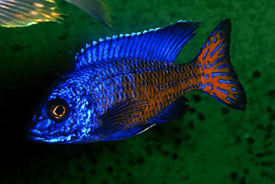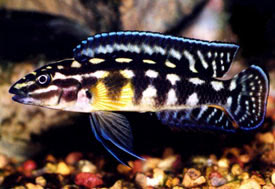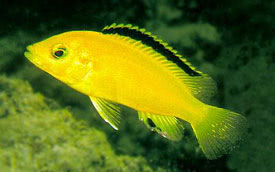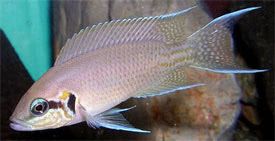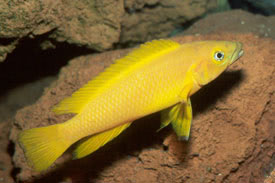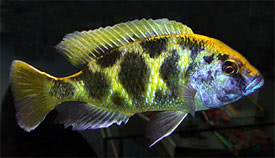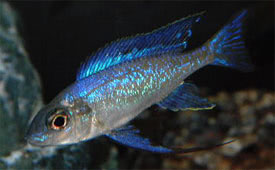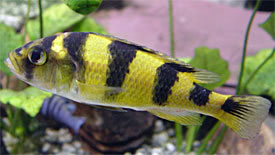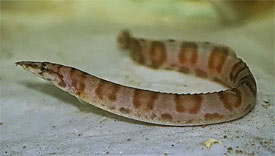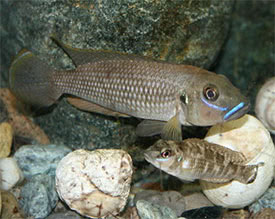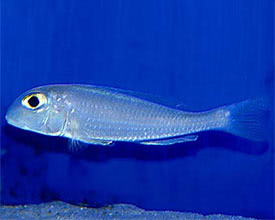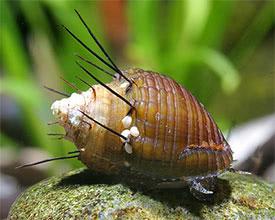
 Magyarul / Hungarian
Magyarul / Hungarian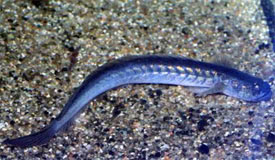
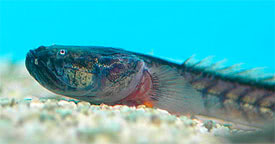
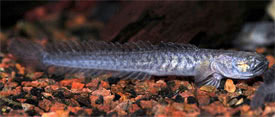
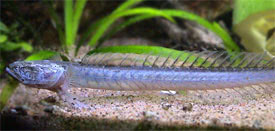
- Scientific name: Gobioides broussonnetii
- Synonyms: Amblyopus brasiliensis, Amblyopus broussonetii, Amblyopus mexicanus, Cayennia guichenoti, Cepola striata, Cepola unicolor, Gobioides barreto, Gobius brasiliensis, Gobius oblongus
- Common name: Violet Goby, Dragon Fish, Dragon Goby
- Group: Brackish fishes
- Habitat: Central America; Widely distributed from the southern United States to north eastern South America, on the Atlantic coastline.
- Size: 55-60 cm, but usually smaller in aquarium (often 25 cm)
- Biotope: Inhabits in river estaurines, over the muddy substrates.
- Social behavior: Very territorial with conspecifics, and would need a huge tank to keep more than one fish, although they will not eat other smaller fish. It can be kept with other peaceful brackish species.
- Diet: Omnivorous; mainly eats filamentous algae and organic detritus in nature, thus feeding of the wild caught fish can be problematic. In aquarium it feeds on live and frozen foods, but will need some vegetable matter such as spirulina.
- Breeding: It has not been bred in aquarium
- Tank: Minimum 450 litres
- Population: 1 fish for 450 litres
- Decoration: The substrate should be soft sand, as the fish likes to bury itself. Also provide hiding places with roots and smooth rocks.
- Temperature: 22-26 °C
- pH: 7.5-9
- Hardness: 10-25 NK°
- Salinity: 10g salt/10 litres
- Lifespan: 10-12 years
Description: The Violet Goby has a slender, elongated, eel-like body with a large head. The spiny dorsal fin runs nearly the length of the body, while the anal fin runs along the rear half of the body. The flanks are silvery with a violet iridescence and marked with brown markings. The fins are greyish-brown. They have sharp teeth, however these are used for scraping algae off rocks, not fighting. Violet gobies have very small eyes, and very poor vision. While often sold as a freshwater fish, it doesn’t do well under such conditions for long time. Instead it needs to be kept in fairly brackish conditions. Incidentally, a second species, Gobioides peruanus, is traded under the violet goby name as well. It comes from the Pacific rather than the Atlantic coastline and has fewer purple bands on its flanks.
It is hard to tell the differences between sexes, but the male’s genital papillae is pointed and long, while the female has short, blunt and yellow genital papillae. There are not much information about their breeding habits, but it is possible in a large aquarium. They typically spawn in a small group of one male and three or more females. The tank should be furnished with many hiding places for the females and a site for the male to build his nest. The fish should not be fed for a week, and then condition the fish well with large amounts of high quality live foods. Spawning can be triggered by lowering the salinity from the regular, then rising it to almost marine conditions. The male will spawn with several females over a day. After the spawning, the females should be removed. The male guards the eggs. After 36-48 hours, the fry hatch and the male should be also removed. After the egg sacs are consumed, the fry can be fed with algae („green water”). After a month the fry can be fed with brine shrimp nauplii.





